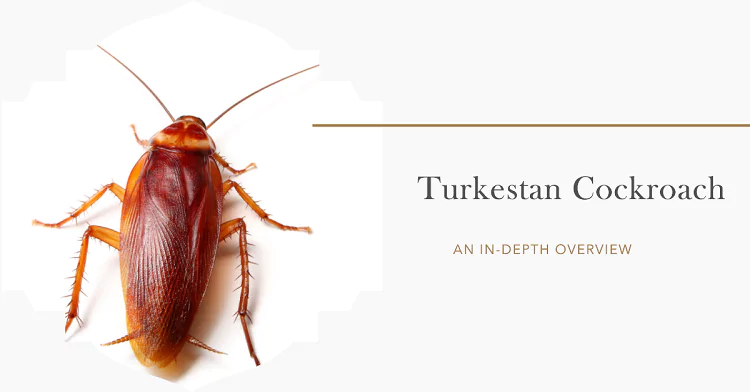Turkestan cockroaches, also known as desert cockroaches, are a species of cockroach that is native to Central Asia. They are tough and can live in many different places, like deserts, forests, and cities.
Turkestan cockroaches are relatively large cockroaches, with adults reaching up to 2 inches in length. Their long, thin antennae are also a well-known characteristic of theirs. People do not usually see Turkestan cockroaches as pests, but they can cause trouble if they invade houses or businesses.
In this blog, we’ll examine Turkestan roaches in detail. We’ll talk about their biology, behavior, and potential as an indoor pest. We will also provide tips on how to control these cockroaches if they do infest your home or business.
What are Turkestan cockroaches?
Turkestan cockroaches are a type of cockroach that is native to temperate and subtropical regions of the Middle East. They also have the names red runner cockroaches or rusty red cockroaches.
The roaches are about 1 inch long. They have a dark brown to black body. They also have cream-colored markings on their wing edges. Females are slightly larger than males.
What do Turkestan cockroaches look like?
Turkestan cockroaches have a distinctive appearance that makes them easy to identify. These insects are small, measuring approximately 1 inch. Their body is dark brown to black. Additionally, they have cream-colored markings on their wing buds.
Females are slightly larger than males. Male insects have longer, yellow wings that go beyond their body.
Where do these cockroaches live?
Turkestan cockroaches typically inhabit outdoor areas, but they may occasionally invade indoor spaces, particularly during the summer months. They prefer warm, wet places and frequently appear near houses and businesses, such as woodpiles, compost piles, and drainage pipes.
What are the health risks of these cockroaches?
Turkestan cockroaches can pose a number of health risks. They can have germs that cause food poisoning and other sicknesses. They can also trigger allergies in some people. Furthermore, oriental cockroaches transmit diseases such as typhoid fever, dysentery, and salmonella.
How to control Turkestan cockroaches?
There are a number of ways to control female Turkestan cockroaches infestation. Be careful with commercial pesticides, they work really well. You can use DIY methods like traps, boric acid, and sealing cracks to deal with pests in your home.
How to prevent Turkestan cockroaches?
In order to ward off male Turkestan roaches, put into action deterrent methods to keep them away from your home. To simplify your home, seal cracks, keep it clean, remove clutter, and dispose of food scraps correctly. You should also avoid bringing in infested materials, such as firewood or used furniture.
Final Words
Turkestan cockroaches, a relatively large and hardy species of cockroach, inhabit a variety of habitats. Typically, people do not consider them a pest, but they can become a problem if they infest homes or businesses. To control Turkestan cockroaches in your home, seal cracks, remove food, and use baits or sprays.
I hope this blog post has been informative. If you have any further questions about Turkestan cockroaches, please feel free to leave a comment below.

Mark Thompson, a seasoned pest controller, is renowned for his expertise in keeping homes and businesses free from unwanted intruders. With a passion for environmental sustainability and a deep understanding of pest behavior, Mark has become a trusted authority in the industry.
